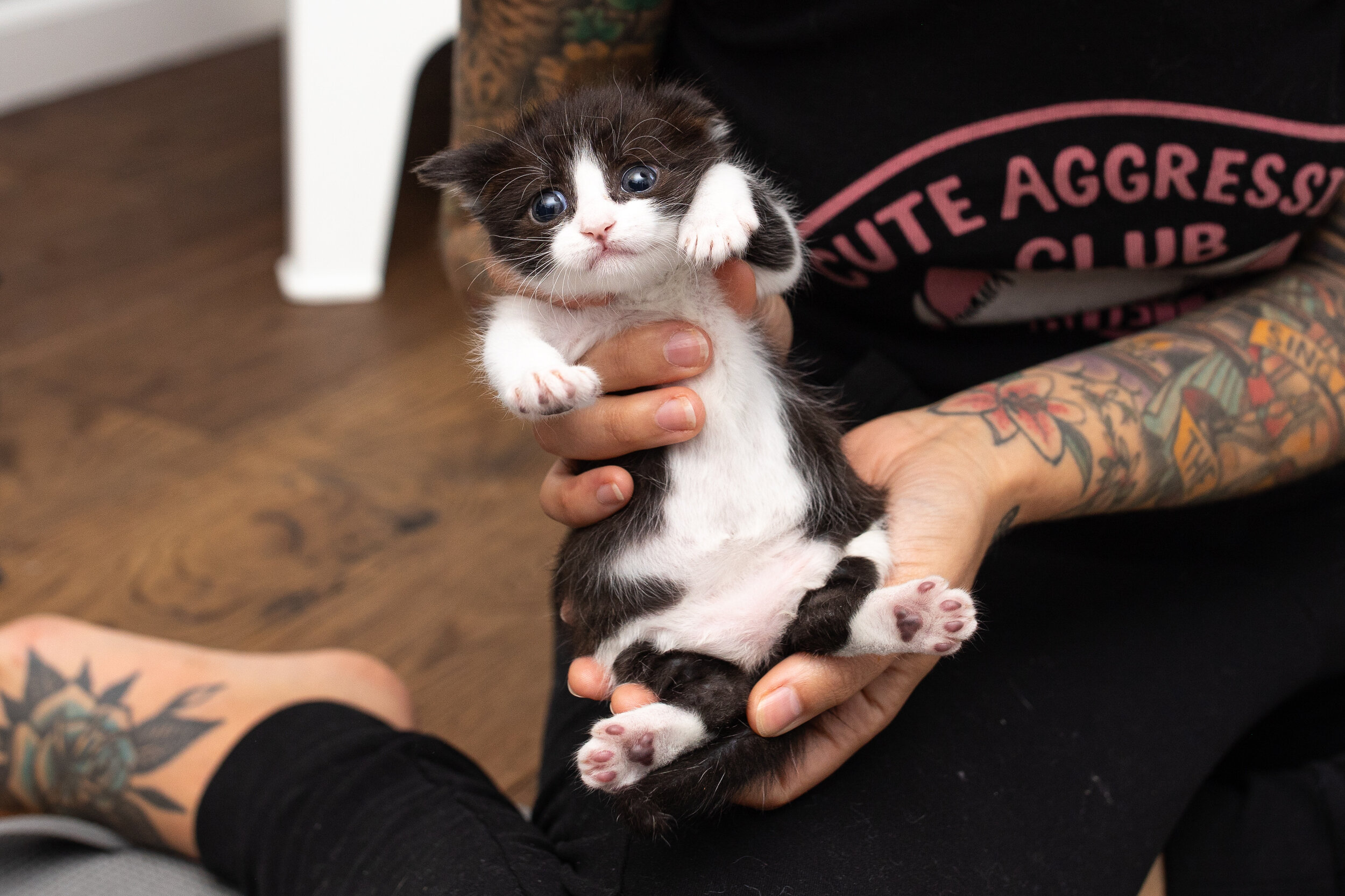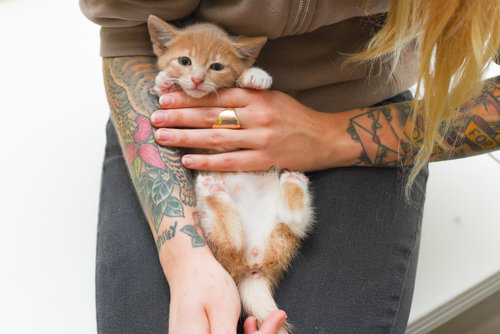Swimmer Syndrome in Kittens
From swimmer to runner! After treatment, Apple had perfect mobility.
What is Swimmer Syndrome?
Swimmer syndrome is a congenital condition that can occur in young kittens, causing the legs (typically the hind limbs) to splay laterally. The kitten may have a frog-like posture, with the hips jutting out to the side of the body and the feet facing sideways, rather than placed underneath the body. Kittens with swimmer syndrome will find it difficult or impossible to stand and walk.
While most literature suggests that swimmer syndrome is more common in puppies, this is simply not true. Many kittens are born with swimmer syndrome, but they are very commonly euthanized, even though the condition is treatable through early intervention and physical therapy. If you’ve recently rescued a kitten with swimmer syndrome, don’t be discouraged. Act quickly, and you may be able to make a lifelong difference for the kitten’s mobility.
What Causes Swimmer Syndrome?
The cause of swimmer syndrome is still not fully understood within scientific literature. It seems to have a strong genetic component, with multiple kittens in a litter often presenting with splayed limbs. Kittens may also be impacted by an unbalanced diet of the mother cat, which can lead to musculoskeletal issues and deficient ligaments for her young. The tendons around the hips may be quite loose, causing the hips to be overly flexible and to veer outward. There is no diagnostic test for swimmer syndrome; it is diagnosed by visual observation and kittens should begin treatment as early as possible.
Swimmer Syndrome is Evident Around 3 Weeks of Age
On the left, a 3 week old kitten with swimmer syndrome. On the right, a 3 week old kitten with standard leg position.
Rescuers should not assume that a kitten has swimmer syndrome if she is under 3 weeks of age, as newborn kittens may appear to have splayed limbs simply due to age. Kittens 0-3 weeks old do not have the muscular development and motor skills to fully place a foot underneath the body and walk. By 3 weeks of age, however, a kitten will typically begin to learn to walk. If the limbs are splayed in such a way that the feet are pointed outward, a veterinarian should be quickly consulted to confirm whether the kitten has swimmer syndrome.
If you’re not sure what age your kitten is, check out my handy information on how to tell a kitten’s age.
Early Intervention is Critical
The body of a young kitten is growing rapidly, both in the development of bone and muscle mass, and in the development of motor skills. By intervening as close to 3 weeks of age as possible, caregivers can get the kitten’s body into a proper position and teach the kitten to walk within a relatively short period of time.
Leg Wrapping and Hobbles
The primary therapy for swimmer syndrome is to tape or wrap the legs so that the hips, knees, and ankles are squared. There are several methods for doing this, but what I recommend most is to create hobbles using medical tape:
Use a good quality medical tape that will not pull at the fur or skin when removed.
Find the kitten’s knees, which are located by the abdomen. Manually straighten the joint to stretch the knee outward. Wrap your medical tape around 2 times. Repeat for the other knee.
Find the kitten’s ankles—the joint at the end of the foot. Wrap your medical tape around 2 times. Repeat for the other ankle.
Manually square the hips, knees, and ankles to an extent that does not cause pain to the kitten. You can always begin with a wider gap between the limbs, and slowly bring them closer together over a period of several days.
Once you have the legs in the correct position, apply a line of tape connecting the taped knees and the taped hips.
Remove and replace one to two times a day for physical therapy exercises.
Physical Therapy Exercises
One to two times a day, completely unwrap the legs for physical therapy exercises.
Range of motion exercises: gently stretch the limb straight, then bend each joint until the foot is underneath the body. Repeat several times on each leg.
Cycling: holding the kitten in your lap, gently bicycle the legs.
Foot placement: while the kitten eats a meal, place their feet underneath the body.
Encourage steps: use a toy to entice the kitten to take steps towards it.
Massage each leg while holding it in the proper position.
You’ve Got This!
Caring for a swimmer syndrome kitten is such a rewarding experience. You’ll find that even one week of leg taping/wrapping and physical therapy can make all the difference, and can give the kitten the gift of a lifetime of mobility.








